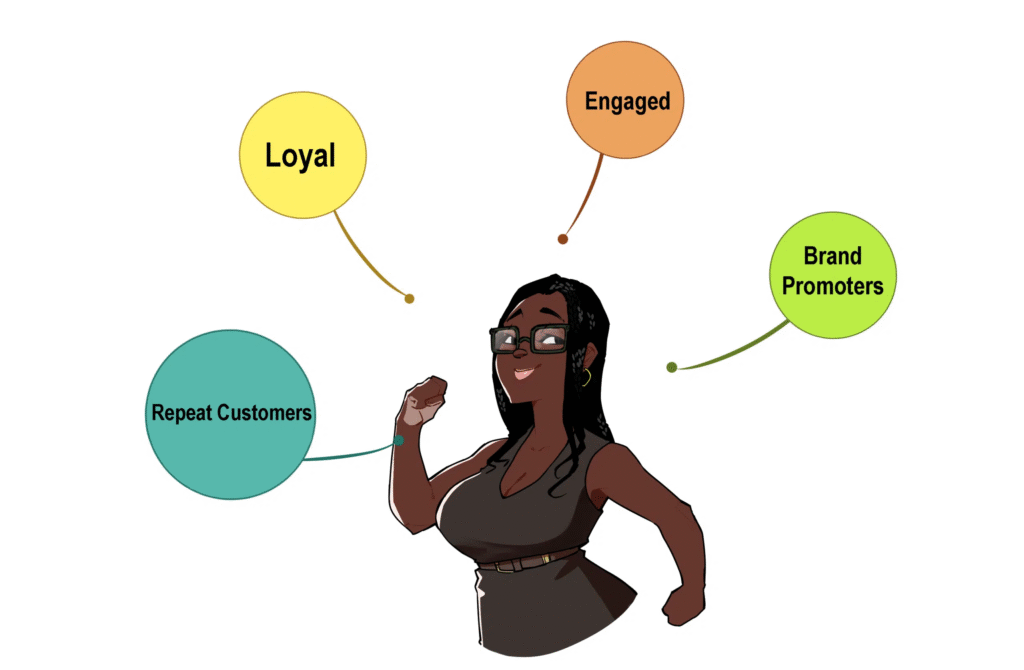Finding your ideal customer isn’t just about running ads or casting a wide net online, it’s about precision, clarity, and confidence in who you serve best. If you’ve ever felt like your content isn’t connecting, your ads aren’t converting, or your engagement is low, this post will show you how to fix that, fast.
This guide walks Nigerian startups and small business owners through a proven framework to help identify, understand, and attract the right audience — your ideal customer.


Why You’re Not Reaching the Right Audience
You’re posting consistently. Running campaigns. Spending money. But your leads are low-quality or uninterested. What’s going wrong?
Common signs you haven’t defined your ideal customer:
- High engagement but low sales
- Lots of followers, few actual buyers
- Ads get clicks, but no conversions
- You’re attracting people who can’t afford your offer
It’s time to go back to basics and redefine who you want to serve.
Read: Five Free Tools to Help You Understand Your Target Audience
What Is an Ideal Customer Profile (ICP)?
Your ideal customer is the person who:
- Has the problem your business solves
- Is willing and able to pay for your solution
- Aligns with your values, processes, and offer
- Gets the best results from what you provide
An Ideal Customer Profile is a detailed description of this person (or company) based on real data, insights, and your business strengths.
5 Steps to Identify Your Ideal Customer
1. Analyse Your Best Customers
Look at your most successful past clients or repeat buyers:
- What do they have in common?
- Where did they come from?
- What problem were they trying to solve?
At Slvr Wlf, we’ve worked with dozens of businesses across different industries. Over time, we’ve identified clear patterns that define our ideal customer:
- They are not digital skeptics – Even if they aren’t social media natives, they understand the power of digital marketing to drive business outcomes.
- They are not DIYers – They value their time and trust professionals to execute what they can’t or shouldn’t do themselves.
- They make between ₦5M–₦50M per quarter – This revenue range allows them to invest at least ₦500,000 quarterly in strategic advertising and growth campaigns.
Having this clarity helped our sales and marketing teams streamline messaging, improve targeting, and qualify leads much faster.
2. Use Social Listening & Engagement
Check your DMs, comments, and post interactions:
- What questions do people frequently ask?
- Who is engaging but not buying?
- Are there patterns in tone, demographic, or pain point?
3. Build a Customer Persona
Create a profile that includes:
- Name, age, gender, location
- Income level, job role or business type
- Pain points and desires
- Preferred social media platforms and buying triggers
🔗 Use our free Customer Persona Template PDF to guide you.
4. Segment By Demographics & Behaviour
Your audience isn’t one-size-fits-all. Break them into:
- Demographic groups (age, location, income)
- Buyer stages (cold, warm, hot)
- Decision-makers vs influencers
5. Test Your Assumptions
Create content or offers targeted at the persona you built:
- Are you getting better engagement?
- Do they ask deeper questions?
- Are conversion rates improving?
Tools to Help You Understand Your Audience
Use these free and easy tools to gather insight:
- Meta Audience Insights – to view data about your followers
- Google Analytics – to check traffic sources and interests
- Quora, Reddit, Nairaland – for questions your audience is asking
- Typeform / Google Forms – for running mini surveys
- ChatGPT – to brainstorm persona questions
Case Study: The Power of Defining the Right Audience
One of our clients — a boarding school — had lost over 50% of its middle-class parents because many relocated with their children. Enrolment had dropped, and they needed new families urgently.
We stepped in and developed a strategy that focused on parents outside the school’s local city, including Nigerians living in the UK and US. These were parents open to sending their children back home for structured, values-based education.
We positioned the school’s strengths — discipline, student wellbeing, cultural grounding — through the eyes of teachers and students. We revamped their Facebook and Instagram presence to reflect authenticity, warmth, and safety.
The result? Hundreds of enquiries, increased enrolment in the next term, and a six-month extension of our contract. This wouldn’t have been possible without clarity on their ideal customer profile.
Mistakes to Avoid When Defining Your Audience
- Trying to serve everyone
- Building a persona without data
- Not updating it as your business grows
- Focusing on vanity metrics (followers instead of buyers)
Bonus: How to Validate Your Audience Fit
Before you scale, validate:
- Can you reach them affordably online?
- Do they have purchasing power?
- Do they refer others or give testimonials?
Frequently Asked Questions (FAQ) About Finding Your Ideal Customer
How do I find my ideal customer?
Start by analysing your best customers, identifying their traits, and creating a detailed customer persona. Use insights from social media, customer interactions, and analytics to build an Ideal Customer Profile.
What is an Ideal Customer Profile (ICP)?
An Ideal Customer Profile (ICP) is a clear, data-driven description of the person or business most likely to benefit from your product or service, and who you enjoy working with or serving.
Why is defining my ideal customer important?
It helps you focus your marketing, attract better leads, lower ad costs, and convert more effectively. Without clarity, you risk talking to the wrong people and wasting resources.
Can my ideal customer change over time?
Yes. As your business evolves, your ideal customer may shift. It’s important to review and refine your customer profile regularly, especially after launching new products or services.
Final Thoughts: Clarity Before Content
If you’re not seeing results online, the problem might not be your content — it’s your clarity.
🎯 Defining your ideal customer isn’t a “nice to have.” It’s the foundation of sales, content, ads, and strategy.
📞 Book a free 30-minute session with Slvr Wlf Digitale to identify your ideal customer and build a strategy that attracts them.
Your audience is waiting. Let’s help them find you.


Meet Abigail Anaba—your go-to expert for mastering digital strategy. With a postgraduate award in Creating Strategic Advantage from Warwick University, Abigail transforms complex digital challenges into clear, actionable insights. Her unique blend of storytelling and journalistic precision not only makes her strategies engaging and relatable but also drives real results.
